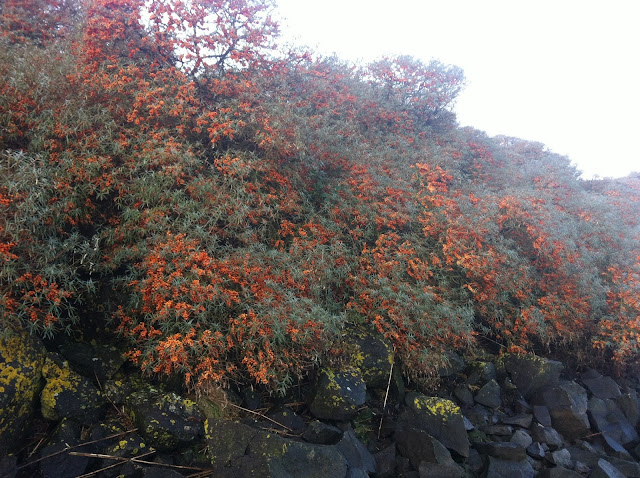The penultimate visit to Portstewart Strand on the 9th of November was a very slow one and we were packed up and away by 10. At the stage of packing up we were sitting on only 2 new birds with a Blackbird, Wren plus 5 retraps. At the last gasp we got a nice final reward with a 1st year male Blackcap bearing a Belgian ring. It had originally been ringed near Grembergen in northern Belgium on the 18th of September at a distance of around 532 miles. Only our second foreign control for the site following last years Sedge Warbler, also from Belgium.
Blackcap control from Belgium
The movements of Blackcaps are interesting ones and I would suggest it is fair to say that this bird is one of the increasing number of Blackcaps that migrate into Ireland for the winter. These birds are believed to come from central Europe, particularly in Southern Germany in Württemberg-Baden and Bavaria and there are a number recoveries to back up this theory. One such bird ringed in Northern Ireland in January was subsequently recovered in its breeding grounds in the Black Forest in southern Germany. These birds pass through the European lowlands to winter in the UK and Ireland, with further recoveries of birds that have passed through Belgium, The Netherlands and England which have spent the winter in Ireland. Check out the link below for a previous post on Sylvia Warblers in Ireland and some mapped recoveries.
http://causewaycoastrg.blogspot.co.uk/2016/02/irish-bird-ringing-data-tree-grass-and.html
The final visit of the season at Portstewart Strand wasn't much busier with 1 new bird each for Blackbird, Goldcrest, Robin, 8 retraps and a bit of boost by 13 new Linnets. The only thing of real interest was a female type Common Scoter which is the 121st species for the year for the Bann Estuary.
Linnet
We packed up the site for winter and don't intend to be back until March 2017. I'll update on the season total for the site in the coming weeks.
The NI Environment Agency have been in touch recently to inform me that they will be undertaking widespread habitat management at the site over the winter which will involve the removal of some large areas of the non-native invasive Sea Buckthorn. It looks as though we are going to lose a few of our net rides and will be working in a very different site next year but it is sound conservation on their part and we will make it work!
Ken has been busy in making some alterations to his garden ringing site and made a few net rides and generally just chopping and changing things. The birds continue to visit his garden on masse to some of the c20 feeders on offer!
Ken hosted a couple of trainees on the 28th and 31st and produced some good catches of 44 birds and 67 birds respectively. There were a few nice species in the mix with Treecreeper, Sparrowhawk and Woodpigeon.
Sparrowhawk (DJ)
Kens Garden Ringing Totals - 28th + 31st
Blackbird 5
Blue Tit 18
Bullfinch 1
Coal Tit 23
Chaffinch 20
Dunnock 3
Goldcrest 1
Goldfinch 4
Great Tit 19
Robin 10
Sparrowhawk 1
Treecreeper 1
Woodpigeon 1
Wren 4
Total 111
At the moment we don't really have any proper plans for the winter but one site we plan to visit is our Castlerock Golf Club site which is again absolutely laden with millions of Sea Buckthorn berries. The initial reccy showed there to be quite a number of Bullfinch, Chaffinch and Greenfinch plus a mix of other birds including Blackbird and Fieldfare. Once we get the net rides opened up we will hopefully get some good catches!
















